The Archaeological Museum of Arta has been operating since 2009 in modern facilities at a short distance from the famous Bridge of Arta. It includes a rich collection of ancient artifacts, dating from the Paleolithic to Roman times. The Museum depicts the rise and fall of the ancient Greek city of Ambracia, which started as a colony of Corinth around 625 B.C. during the second Greek colonization, and at Hellenistic times became the capital of the State of King Pyrrhus.
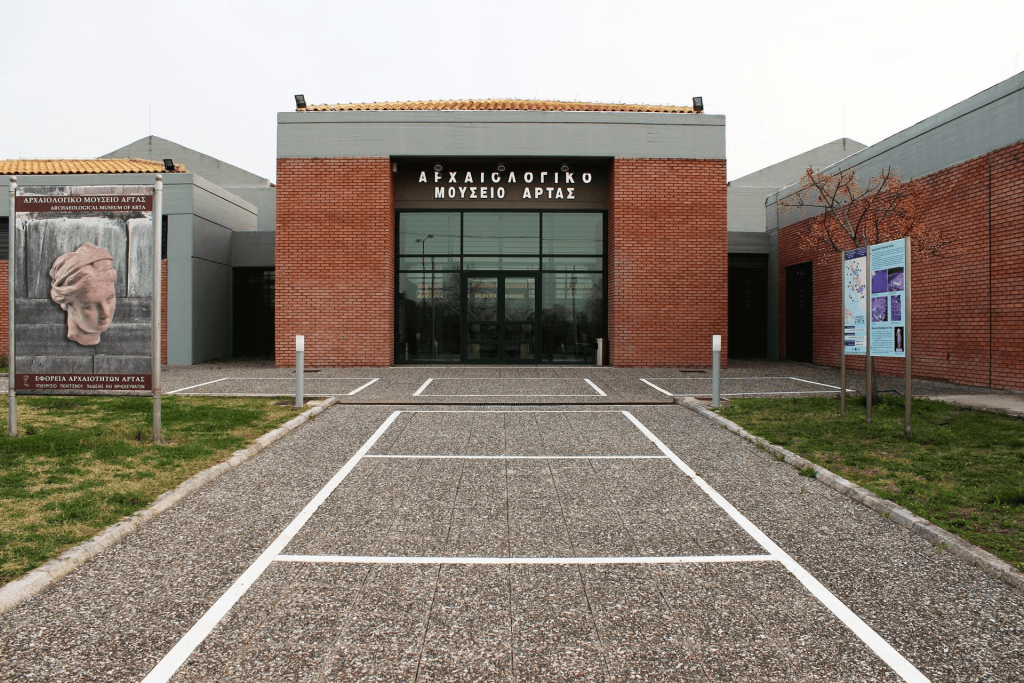
The Museum is presenting the different political, social, economic, and cultic manifestations of culture from the appearance of prehistoric man until late antiquity in Ambracia and their interpretation through material objects, which, as carriers of these manifestations, acquire meanings in addition to their uses linked to the timelessness of human needs and highlights. Special reference is made to the coexistence of modern Arta with Ambracia, the ancient city being gradually unearthed under the capital of the Regional Unit of Arta.
Museum’s exhibits are presented in four sections. The Exhibition is organized in three main museological sections: public life, burial customs, and houses. At the beginning and end of the exhibition, two smaller spatial units – “Introduction to the exhibition” & “The end of Ambracia” are presented.
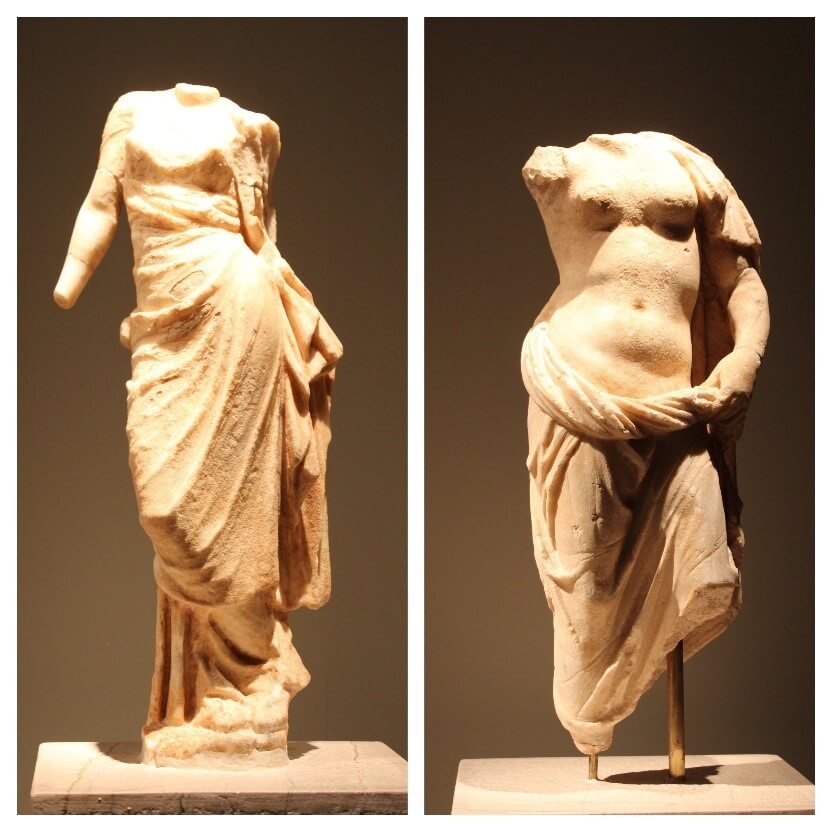
The first major section of the exhibition is dedicated to public life within the walls of ancient Ambracia. The second major section of the exhibition is largely dedicated to Ambracia beyond the city walls and takes up a part of the 1st and the entire 2nd gallery. The last part of the first and the entire second gallery is dedicated to Ambracia’s cemeteries. Special reference is made to the location and the spatial organization of cemeteries, the types of graves and burials, the funerary steles, the grave goods accompanying the dead to their last resting place, and lastly, to burial customs. In the third major section of the exhibition are recreated the main spaces of a typical ancient house, such as the courtyard, Oikos, andron, bathing facilities, and storage rooms. Every visitor has the opportunity to understand their function and the inner activities, which were taken place inside, such as domestic cults, preparation of food, banquets, child-rearing. A section of a street bordered by Ambracian houses has been recreated in the space surrounding the museum’s building.
The Museum’s exhibition ends at the end of the 3rd room with a brief presentation of the events concerning the siege of Ambracia by the Roman consul Marcus Fulvius Nobilior during the Aetolian campaign (189-187 B.C.). The Ambracians confronted the Roman catapults but were forced to capitulate and accept a Roman garrison. In this way the city, while maintaining some autonomy, lived under the control of the Roman authorities. These events, combined with Octavian’s victory at the naval battle of Actium (31 B.C.) and the founding of Nicopolis (29 B.C.), led to the gradual abandonment of Ambracia and the wider region so that the inhabitants settled on a large scale in the new city, Nicopolis.
"Introduction to the exhibition"
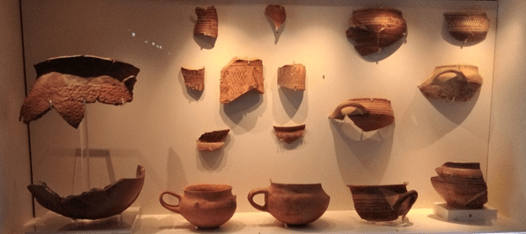
The first small section presents the area before the foundation of Ambracia. It includes a rich collection of ancient artifacts, such as the stone tools dating from the Paleolithic Period, the handmade clay vessels, as well as stone and bronze implements dating from the Bronze Age. The existence from the 9th century B.C. onwards of a small, indigenously populated settlement, with houses of perishable materials and handmade pottery, has been confirmed. In the 8th century B.C., the Corinthians established a trading base at the same location, coexisting harmoniously with the natives until the foundation of their colony at the end of the 7th century B.C.
1. Public Life
The first major section of the exhibition is dedicated to public life within the walls of ancient Ambracia. A short historical overview from the time of the city’s foundation up the early Roman era precedes the section, while a discussion concerning the boundaries of the Ambracia city-state takes as its starting point a treaty defining the border between Ambracia and the city of Charadros. The ensuing subsections bring forward the topics of a civic organization, economy and trade, urban layout, and public buildings.
The closing subsections, prior to the visitor being metaphorically taken beyond the city walls (in effect to the next major section), touch upon music, sports, and public cults, which comprise the connecting link with the following sections.
The exhibits of the first main section pertain to the public life of the inhabitants of Ambracia. The visitor can discover in situ the political organization and the urban planning of the city, the description of the most important public buildings, as the Prytaneum, the Theatres (Small & Big), the Temple of Apollo, as well as the rich fortification of the city, part of which has been discovered sparsely in the whole modern city of Arta.
Pyrrhus had changed the urban landscape of Ambracia, where, from the private housing develops a Hellenistic city with public buildings for the common benefit of the citizens, such as temples and theaters. Ambracia had all the characteristics of a typical ancient Hellenistic city-state. Pyrrhus decorated Ambracia lavishly and managed to form a Kingdom, which he used as a springboard to his Campaign in Southern Italy and Sicily, and his ”Pyrrhic War”, and his ”Pyrrhic Victory”.
The silver coins of Ambracia, the circulation of the foreign coins, and the commercial activity provide full detailed information about the economic life of the inhabitants. Athletics, public worship, and music complete the puzzle of the inhabitants’ lives.
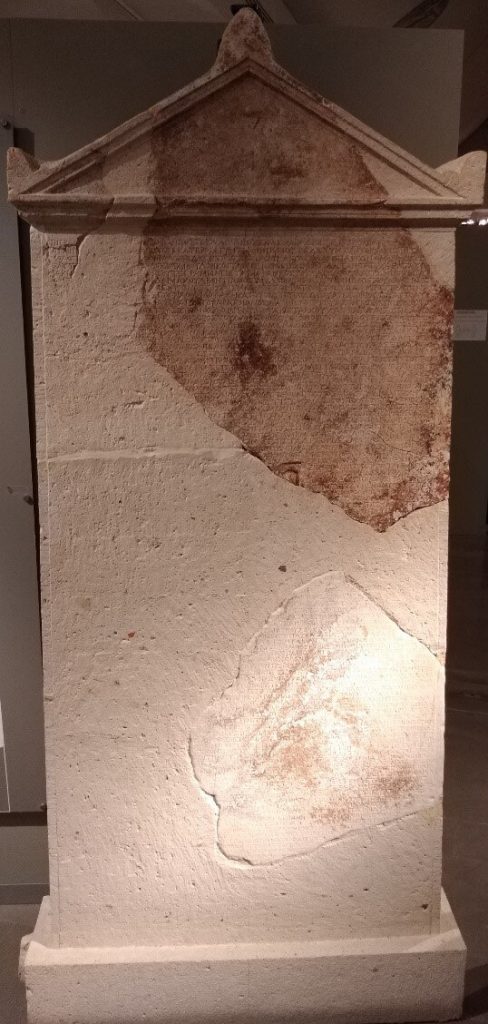
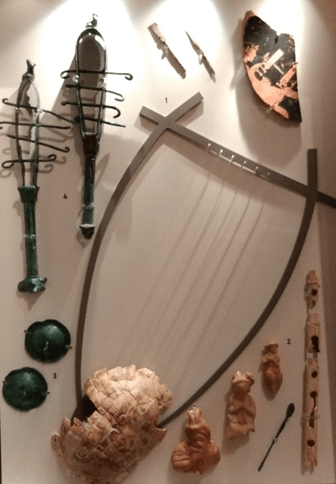
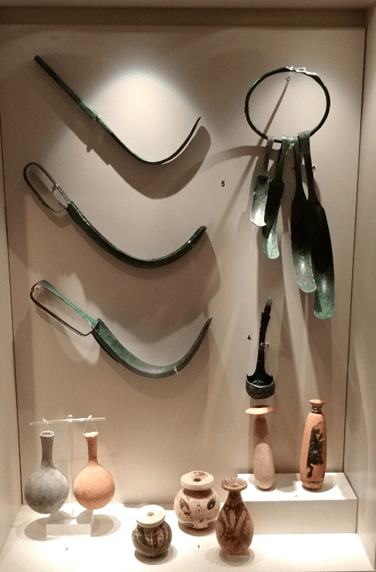
2. Burial Customs
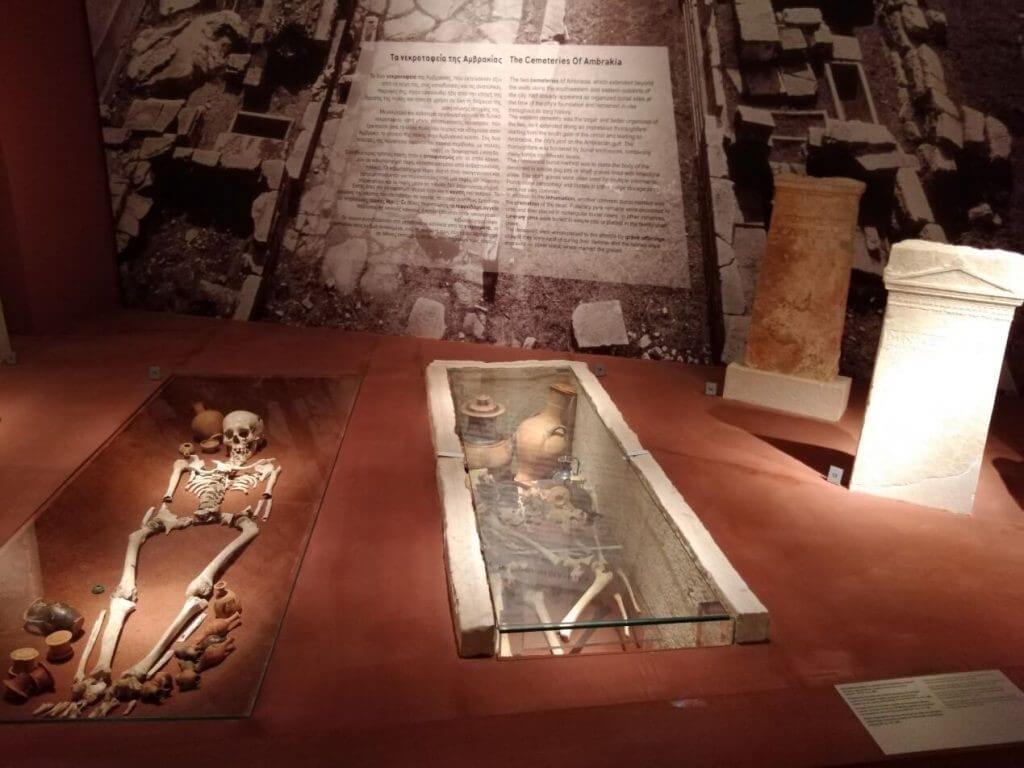
The second section informs the visitors about the two Cemeteries of Ambracia, which extended outside its walls. In this section, there are shaft graves, stone stelai, and grave offerings. There is also the description of burial practices, such as inhumation and cremation, which was often costly practice.
3. Houses
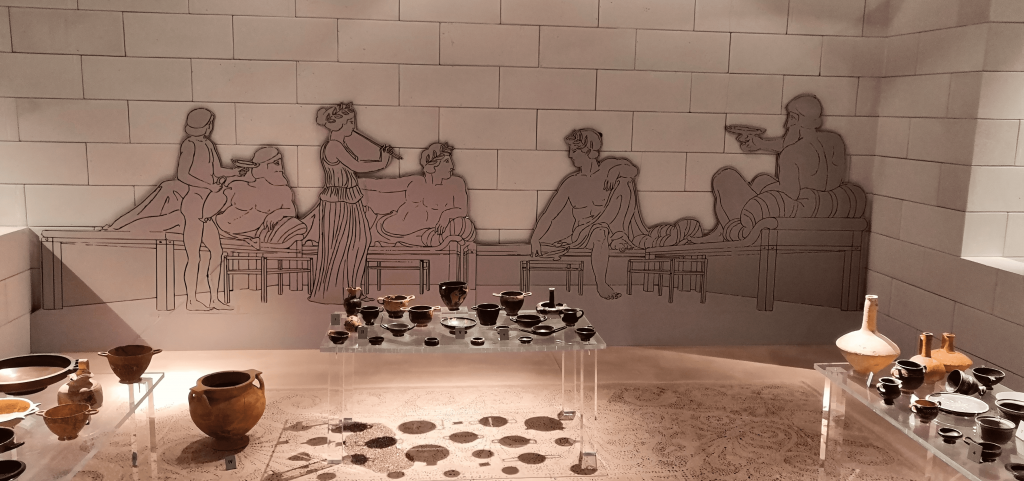
The third section presents the private life of the inhabitants of Ambracia. The exhibition presents also every room of a private house (Oikos) in Ambracia, such as the Hestia, the heart of an ancient house where the people performed daily libations and offerings to the goddess Hestia, goddess patroness of the household. The Andron presents the habit of the men to drink together in symposia, while the women spent a lot of time in the Gynaikonites, raising the children, weaving, caring for their appearance, relaxing, and chatting.
"The end of Ambracia"
The last smaller spatial unit is dedicated to the End of Ambracia. The End of the city came in 189 B.C. by Marcus Fulvius Nobilior accompanied by his protégé, famous epic poet Quintus Ennius. M. Fulvius Nobilior had erected in Rome a Templum Herculis Musarum to house the statues of Hercules the Musagète and the Nine Sisters (Muses) which had been taken with many other spoils from the former palace of Pyrrhus in Ambracia, thus introducing the cult of the Muses to Rome. Nobilior and Ennius saw this temple as the Greek Museion “house of the Muses”, which had the character of the more famous “Museum», namely that of Alexandria. Octavian’s victory at the naval battle of Actium (31 B.C.) and the founding of the city of his victory, Nicopolis, (29 B.C.), led to the gradual abandonment of Ambracia and the wider region so that the inhabitants settled on a large scale in the new city, Nicopolis.
The Museum’s exhibition ends at the end of the 3rd room with a brief presentation of the events concerning the siege of Ambracia by the Roman consul Marcus Fulvius Nobilior during the Aetolian campaign (189-187 B.C.). The Ambracians confronted the Roman catapults but were forced to capitulate and accept a Roman garrison. In this way the city, while maintaining some autonomy, lived under the control of the Roman authorities. These events, combined with Octavian’s victory at the naval battle of Actium (31 B.C.) and the founding of Nicopolis (29 B.C.), led to the gradual abandonment of Ambracia and the wider region so that the inhabitants settled on a large scale in the new city, Nicopolis.
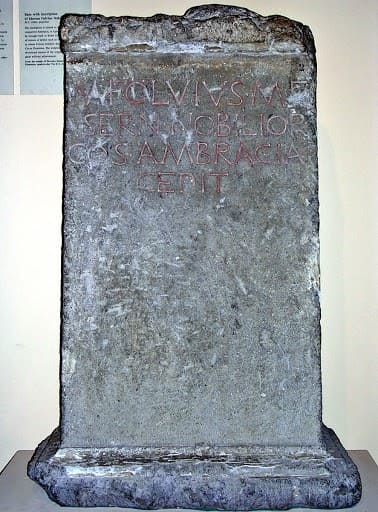
Specifically, on 2 September 31 B.C., the naval battle at Cape Actium sealed Octavian’s victory and opened the way for the empire. Augustus, in order to keep his victory over the allied forces of Antony and Cleopatra for eternity, founded Nicopolis, the city of Victory. All the inhabitants of an extensive region (Kassopaia, Ambracia, part of Acarnania, and Aetolia) including Ambracia are forcibly settled there, creating an island of prosperity with Nicopolis as its center and leaving the rest of the region, completely deserted, as a refuge in the hands of bandits. As a result, sporadic habitation of Ambracia appears in the early Christian centuries and specifically until the 4th century AD, as evidenced by remains of houses and burials excavated in the western cemetery of Ambracia.
Chronological timeline
Ambracia was founded between 650 and 625 B.C. by Gorgos, son of the Corinthian tyrant Kypselos, at which time its economy was based on farmlands, fishing, timber for shipbuilding, and the exportation of the produce of Epirus. After the expulsion of Gorgos's son, Periander, the government of Ambracia developed into a strong democracy.
During the Persian Wars, Ambracia has participated in the alliance of Greek cities that resisted the Persians.
In 480 B.C., the Persian invasion force, led by the Persian king in person, had scored victories at the battles of Thermopylae and Artemisium and conquered Thessaly, Phocis, Boeotia, Euboea, and Attica.
In the Battle of Salamis, Ambracia has contributed with seven ships. At the ensuing Battle of Salamis, the Allied Greek navy had won an unlikely but decisive victory, preventing the conquest of the Peloponnesus. Xerxes then retreated with much of his army, leaving his general Mardonius to finish off the Greeks the following year.
In the Battle of Plataea, Ambracia participated with 500 hoplites. The Battle of Plataea was the final land battle during the second Persian invasion of Greece. It took place in 479 B.C. near the city of Plataea in Boeotia and was fought between an alliance of the Greek city-states (including Sparta, Athens, Corinth and Megara and Ambracia), and the Persian Empire of Xerxes I (allied with Boeotians, Thessalians, and Macedonians).
The early policy of Ambracia was determined by its loyalty to Corinth (for which it probably served as an entrepot in the Epirus trade), and its consequent aversion to Corcyra (as Ambracia participated on the Corinthian side at the Battle of Sivota, which took place in 433 B.C. between the rebellious Corinthian colony of Corcyra (modern Corfu) and Corinth. The Battle was one of the immediate catalysts for the Peloponnesian War.
During the Peloponnesian War Ambracia followed the Corinthians, allying himself with Sparta. This resulted in a conflict with its neighbours Acarnanians, who were allies of the Athenians. In 426 B.C., its 3,000 hoplites were defeated by the Athenians and Acarnanians at the Battle of Olpae and the city suffered great destruction. Ambraciotes politics featured many frontier disputes with the Amphilochians and Acarnanians. Hence it took a prominent part in the Peloponnesian War until the crushing defeat at Idomene (426), which crippled its resources.
In the 4th century B.C., it continued its traditional policy, but in 338 was besieged by Philip II of Macedon. With the assistance of Corinth and Athens, it escaped complete domination at Philip's hands but was nevertheless forced to accept a Macedonian garrison.
The city numbered around 100,000 inhabitants and flourished from its foundation until the 2nd c. In 294 B.C., after forty-three years of semi-autonomy under Macedonian suzerainty, Ambracia was given by the son of Cassander to Pyrrhus, king of Epirus, who made it his capital, and adorned it with a palace, temples and theatres.
In the wars of Philip V of Macedon and the Epirotes against the Aetolian League (220–205) Ambracia passed from one alliance to the other, but ultimately joined the latter confederacy. During the struggle of the Aetolians against Rome, it stood a stubborn siege, including the first known use of poison gas against the Romans' siege tunnels.
Ambracia was captured and plundered by Marcus Fulvius Nobilior in 189 B.C., after which it was declared by Rome a "free city", and gradually fell into insignificance.
The foundation by Augustus of Nicopolis, into which the remaining inhabitants were drafted, left the site desolate. In Byzantine times a new settlement took its place under the name of Arta. Some fragmentary walls of large, well-dressed blocks near this latter town indicate the early prosperity of Ambracia.

